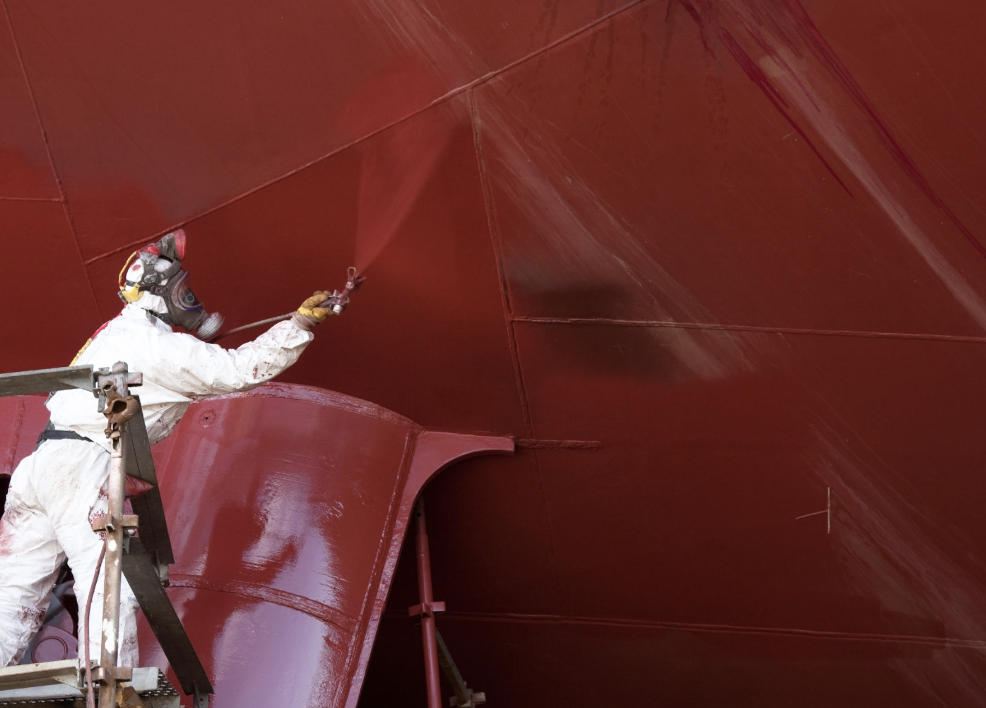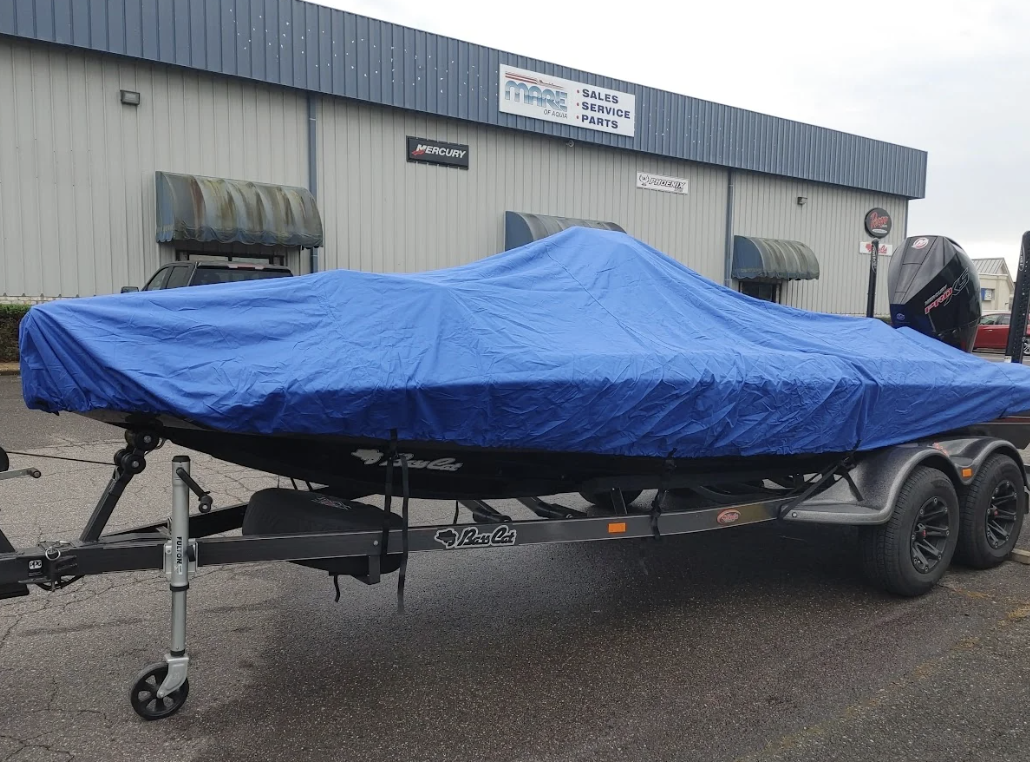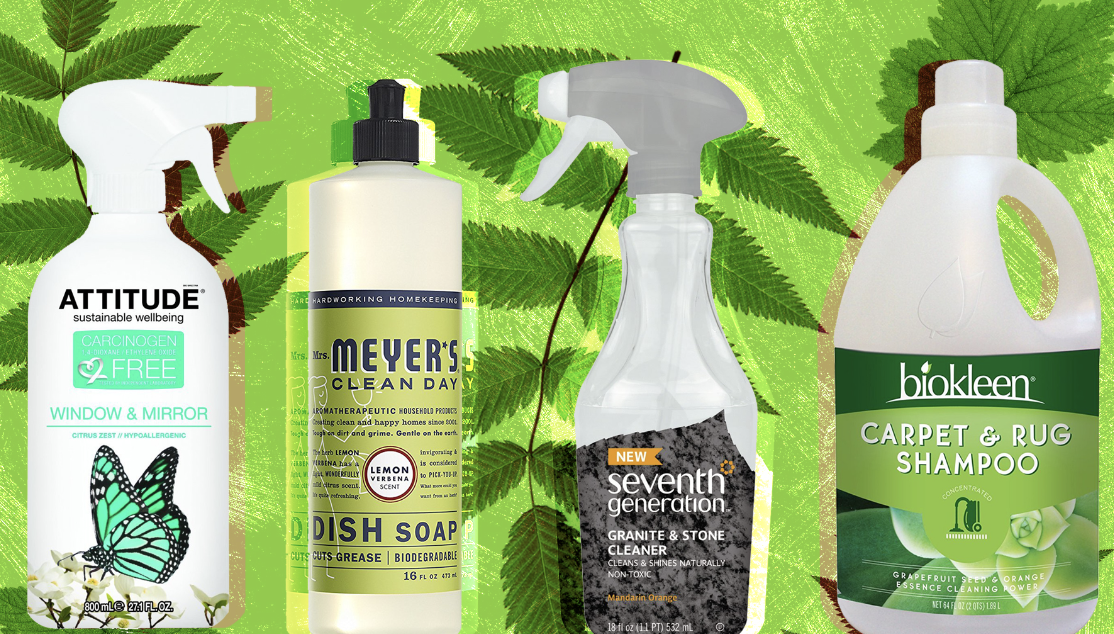Tips for Bottom Painting

Being an active boater for decades, I've been able to see firsthand how things we do on and around the water affect the environment. Today, many of us make a concerted effort to use only green, eco-friendly products for cleaning and maintenance projects.
There are a wide variety of these products on the market now, so even for big undertakings such as spring commissioning when thousands of boaters in the northern climes pull off the tarps and start the process of preparing their boats for summer you can often choose cleaners and materials that won't harm the environment.
In other instances, you can take steps to lessen your projects' environmental impacts.Bottom painting is one of the least favorite spring commissioning projects. By its very nature bottom paint is hostile to the marine environment, since its job is to protect your boat from the water.
The sanding and scraping to remove old paint from the bottoms of all those boats can introduce tons of pollutants every year to our marine ecosystem. Taking the correct precautions from the beginning and using the right products can reduce that pollution significantly.

Most marinas will provide a tarp when the boat is hauled and blocked to catch any paint scrapings or dust. If a liquid paint stripper is being used, make sure it is a non-toxic type designed to treat the kind of paint you are removing.
If sanding, be sure to use protective clothing and eyewear and a respirator. Use a vacuum attachment on the sander to keep dust down to a minimum, and be sure to properly dispose of all waste materials.
Manufacturers of bottom paints today are expending a great amount of effort and resources to develop new products that will not harm the marine environment but will still protect boats from fouling. Interlux has introduced its line of Pacifica Plus bottom paints, which do not include any copper.
Sea Hawk manufactures 9ey, a water-based paint. Other manufacturers are hearing the call to produce safer options.
During your spring cleaning, use non-toxic, biodegradable cleaners when at all possible. Many normal cleaning products contain phosphates and other chemicals that are harmful to our aquatic friends.

Runoff from cleaning products goes straight into our waterways, so it is best to use natural cleaners such as vinegar, baking soda, lemon juice or manufactured biodegradable products from companies such as Biokleen. Kanberra Gel, a safe and natural product that removes mold, mildew and odors, can be found at many marine and retail locations.
When changing your boat's oil or purging antifreeze from the water systems, it is important to catch and recycle these fluids. Ask your marina if they have facilities for recycling this waste. If not, find a local auto parts store or garage that will take them.
Many towns and counties also have designated places where these materials can be dropped off to keep them out of the environment. During commissioning and throughout the boating season we can do many things to protect and improve our water quality: properly dispose of oil filters; recycle batteries; keep oil-absorbent pads handy; use biodegradable trash bags; don't overfill fuel tanks; and find natural alternatives to solvents.
We all can do our part to keep our waterways safe and clean
- Cleaning Solutions
- Fiberglass stains: Make a paste of baking soda and water. Use a sponge or soft cloth, and gently rub the mix into the stain. While baking soda is an excellent all-around cleaner, keep in mind that it is abrasive, so use with care. Use lemon or lime juice as a final wipe-down to keep things smelling fresh.
- Windows and mirrors: Our favorite recipe is 2 cups of water, 1/4 cup of white distilled vinegar, and up to 1/2 teaspoon of liquid soap or detergent. Fill a spray bottle with the solution. Spray it on your windows, and wipe with paper towels or newspapers.
- Chrome: Use apple cider vinegar on a soft cotton cloth to rub it clean.Then, use a fresh cloth with a dab of baby oil to restore it to a bright shine.
- Brass: Use a Worcestershire sauce, vinegar and salt solution.
- Copper fittings: Make a paste of either lemon or lime juice and salt. Rub gently to clean.
- Stainless steel: Clean with a cloth dampened with undiluted white vinegar.
- Aluminum: Using a soft cloth, clean with a solution of cream of tartar and water.
- Plastic surfaces: Use a mixture of one part white vinegar and two parts warm water.
- Decks: Use a mixture of one part white vinegar and eight parts warm water.
- Interior woods: They can be cleaned by using olive oil or almond oil. The oil will provide natural moisturizers for the wood and add shine at the same time.Don't use these oils on exterior surfaces, however, since they don't hold up in direct sun.